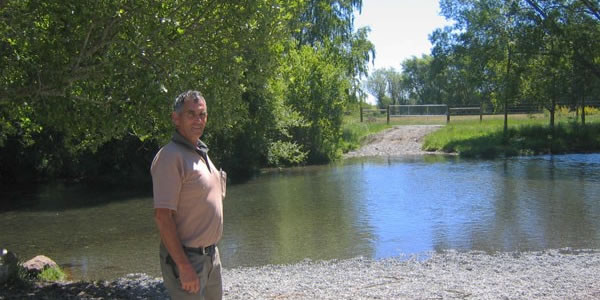Last Thursday evening we hosted the New Zealand River Awards for the second time. The Awards recognise the hard work of Regional Councils and their communities on improving the health of their local rivers. On Friday we met the winner of the River Story competition, the inspirational Bill Kerrison from the Bay of Plenty. Today we take a closer look at the Most Improved River Award with a focus on the winner for 2014 – the Otukaikino in Canterbury.
First up – how did we find the Most Improved River?
The Awards were judged by Dr Roger Young (Cawthron Institute) and Dr Clive Howard-Williams (NIWA). They identified the most improved river in each region where suitable data was available, as well as naming the top three most improved rivers.
Last year the indicator used was E. coli (bacteria), and the winner was the Shag River in Otago. This year improvement was measured by the long-term decline in dissolved reactive phosphorus levels. This is one indicator indicator of a river’s ability to grow algae – in the right conditions this increases the risk of an algal bloom which can choke a river and the life in it. Much of the phosphorus in our rivers is a result of erosion and fertiliser use, but factories and sewage treatment plants can also be a problem. To find out more about the state of your local river, check out the LAWA website.
The Most Improved River for 2014 is… Otukaikino
The Otukaikino has clocked an incredible improvement of 37.8% per annum over the last 10 years. It is now in the best half of sites in the country with a dissolved reactive phosphorus level of 0.0095mg/L – below the level where scientists get concerned (0.01mg/L).
The Otukaikino River (or South Branch) is a deep spring-fed river that flows into the lower Waimakariri River. Its catchment includes the outskirts of Christchurch and until the middle of last decade semi-treated sewage from the Belfast waste-water treatment plant was discharged into the river. Diverting that sewage to the main Christchurch treatment plant is the prime reason for the huge reduction in phosphorus in this river over the past ten years. But it’s not the only reason…
A local hero – Arthur Adcock
For a decade the park ranger at The Groynes Reserve, Arthur Adcock, has worked with the landowners along the river to fence and plant the river banks. The “grunt” work is carried out by periodic detention workers and prisoners. They clear the willow, blackberry, gorse and broom, then plant and mulch the riverbanks. Without their labour, Arthur says, they could not have made the progress they have.
All the plants are native and are locally sourced. Around 15 to 20 thousand are planted each year. The thick native planting has significantly reduced the number of ducks and Canada geese fouling the water. Other community groups have pitched in to help plant, including the Scouts and schools. Arthur says it’s the buy-in from all sides that has made it work.
Canterbury’s success – two of the top three most improved rivers
Canterbury did well in the awards rivers – the Otukaikino and Cam – took out 1st and 3rd place in the 2014 New Zealand River Awards for the most improved rivers in the country. The Oroua River in the Manawatu was the 2nd most improved river in New Zealand.
The improvement in all three rivers has been driven mainly by better sewage treatment. It’s largely a case of towns taking more responsibility for water quality in their local rivers. Landowners and community groups have also played a part in the improvement with riparian fencing and planting of waterways and wetlands, and also planting of erosion-prone hill country in the case of the Oroua catchment.
In summary the three most improved rivers (with their trend improvement) were:
- South Branch (Otukaikino) Dickeys Road (37.8%) Canterbury
- Oroua River at Awahuri Bridge (19.6%) Horizons
- Cam River at Bramleys Road Bridge (19.0%) Canterbury
Regional River Award Rivers
The judges also found the most improved river in every region:
Monitoring site trend improvement Regional Council
Mangere Stream at Knight Rd (14.5%) Northland
Lucas Creek (9.5%) Auckland
Ohinemuri River at Queens Head (10.7%) Waikato
Poukawa Stream at Stock Road (7.3%) Hawkes Bay
Waingongoro River at SH45 (3.8%) Taranaki
Motupipi at Reillys Bridge (6.3%) Tasman
Dunstan Creek at Beattie Road (14.5%) Otago
Mataura at Seaward Downs (5.5%) Southland

